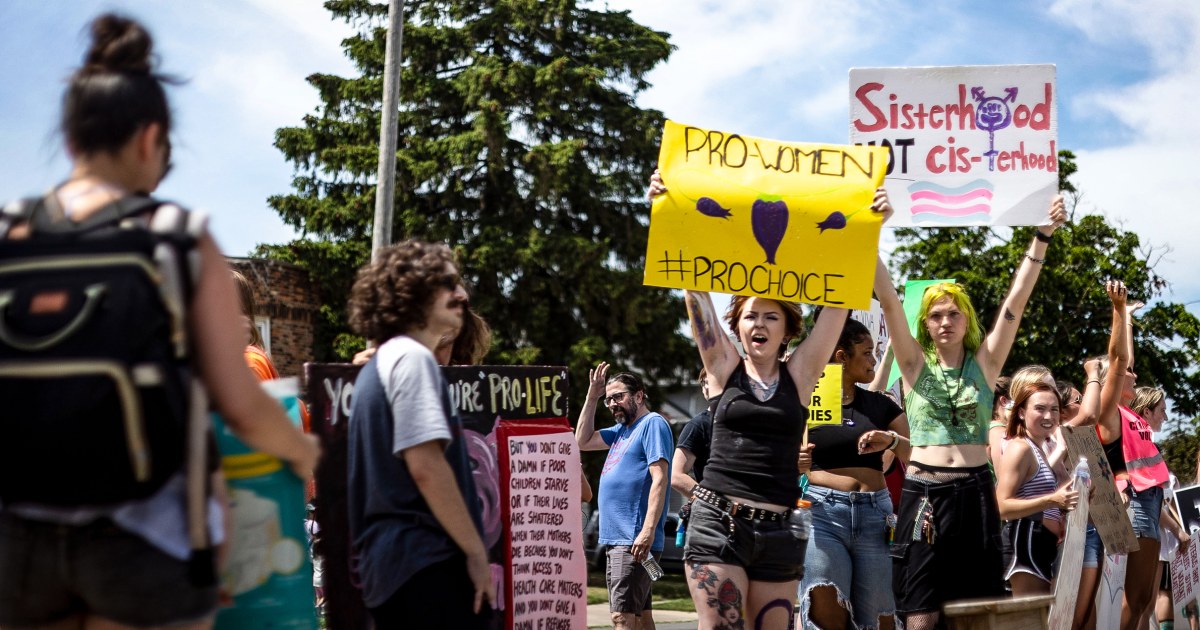
Ohio’s GOP-controlled Legislature passed a series of measures this week that could make it harder to amend the state constitution to protect abortion rights.
Ohio voters will now head to the polls on Aug. 8 to decide whether to raise to 60% the threshold of support required for passage of ballot measures that amend the state constitution. Currently, just a majority is needed.
Reproductive rights groups contend the move is explicitly designed to make it more difficult for voters to pass a proposed amendment set to be on the ballot in November that would enshrine abortion rights in the Ohio Constitution.
Voters will also decide whether groups trying to place ballot measures must obtain signatures from voters in all of Ohio’s 88 counties, instead of the 44 now required.
Because the measures were adopted through a joint resolution, they don’t require the governor’s signature.
The Republican-led moves came just weeks after reproductive rights groups in the state cleared several key hurdles on their own path to get their measure on the ballot in November.
While the measures passed this week don’t explicitly mention abortion, reproductive rights groups maintain that the effort to raise the threshold is aimed at upending their efforts to pass their own ballot measure this November.
If voters pass the threshold measure in August, then the proposed amendment in November to enshrine abortion rights would need 60% of voters to pass. If it fails in August, it would need just a majority.
“This is essentially just a way to cheat the system. It is pretty clear this initiative is coming from anti-choice extremists within the Ohio legislature with the goal of finding a way to change the rules so that Ohioans themselves don’t get a vote in how they want to govern their bodies,” said Dr. Marcela Azevedo, the president and founder of Ohio Physicians for Reproductive Rights, a group that has led efforts among reproductive rights groups in the state for nearly a year.
Several groups opposing the latest measures, including the League of Women Voters of Ohio and the Ohio Voter Rights Coalition, immediately announced efforts to boost voter turnout in and awareness around the August election to help defeat the proposal.
Republican supporters of the freshly passed measures have said they would protect the state constitution from efforts seeking to change it funded by out-of-state “special interests.”
“They’re literally trying to rig it to change the rules,” Azevedo said. “They just know that they can’t win under the rules.”
Raising the threshold for passage of any future constitutional amendments, however, would mark a major shift in the state’s procedures: the simple majority required to pass a proposed constitutional amendment has been in place in Ohio since 1912.
Public polling has shown that about 59% of Ohio voters support enshrining abortion rights in the state constitution — a level just shy of the newly proposed raised threshold.
Ohio Physicians for Reproductive Rights’ proposed measure would insert language in the state constitution that enshrines the right of every individual “to make and carry out one’s own reproductive decisions,” including regarding contraception, fertility treatment, continuing one’s own pregnancy, miscarriage care and abortion. It also specifies that the state shall not “burden, penalize, prohibit, interfere with, or discriminate against” those rights.
The proposed amendment specifies that abortion may be prohibited after fetal viability, but it includes exceptions to protect the mother’s life or health.
The proposed amendment has already been approved by the state attorney general and Ballot Board.
The group has until July 5 to collect about 413,000 valid signatures — 10% of the total votes cast in the latest governor’s race, under Ohio law — across at least 44 of the state’s 88 counties to have the amendment placed. Azevedo said the coalition is “right on target.”
The proposed amendment is designed to counteract Ohio’s “heartbeat bill,” which snapped back into place immediately after the Supreme Court overturned Roe v. Wade last summer. That law, which effectively bans most abortions — but includes exceptions for the health of the pregnant woman and in cases of ectopic pregnancies — remains temporarily blocked by a state judge.
Efforts in Ohio to use the state constitution to protect abortion rights mirror ones across the U.S. in the year since the Supreme Court overturned Roe v. Wade.
Energized by a perfect record on ballot measures in the midterm elections, reproductive rights groups quickly set their sights on planning citizen-led ballot initiatives that would enshrine abortion rights in the constitutions of 10 states this year.
Just as rapidly, however, Republican-led legislatures began trying to curb the ability of citizens and other lawmakers to place ballot measures — a move progressive groups say is explicitly aimed at making it difficult to give voters in red and purple states direct say over major issues such as abortion rights.
Source: | This article originally belongs to Nbcnews.com










